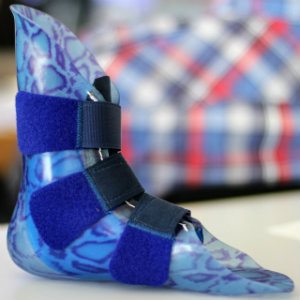Losing a limb, eye, or finger in a workplace accident can change your life forever. These injuries can disrupt your life in a variety of ways. You may struggle to enjoy your favorite recreational activities, be hit with sky-high medical bills, and be unable to return to your job duties or even be permanently unable to work at all.
While the future may seem bleak, recovery is possible with the right resources. Today’s medical technology allows for the use of highly functional prosthetic devices to replace lost limbs. However, medical treatment is extremely expensive, and you may also be struggling to keep up with your bills and mortgage while you’re out of work. That’s why it’s extremely important to make sure you recover every bit of financial compensation you’re entitled to.
If you’ve recently suffered a workplace injury that required amputation, your head may be spinning with questions. You may be wondering what your quality of life will be like in the future if you’ll ever be able to work again, and how you’ll support your family while you’re out of work. It’s absolutely crucial to take full advantage of the financial compensation you’re entitled to during this stressful time.
For victims of these accidents, workers’ compensation benefits are available. Most of these injuries also qualify for Social Security disability benefits. In situations of third party negligence (such as an amputation caused by defective machinery), a personal injury lawsuit may also be an option.
See more articles on work injuries: https://banvillelaw.com/workers-compensation/injuries/hearing-loss/

Virtually all New York employees are covered by workers’ compensation insurance. For amputations and lost limbs, these benefits cover medical expenses, a portion of lost wages, and a schedule loss of use award depending on the affected body part. These benefits may be classified under either partial permanent disability or total permanent disability.
If you’ve lost a body part in a workplace accident, you should file an injury report with your employer and file a claim with the Workers’ Compensation Board after you’ve received medical treatment.
Schedule Loss of Use awards are additional cash payments that are determined based on which body part was damaged and how much it was damaged. These awards are paid out after you’ve reached “maximum medical improvement”, where your condition cannot improve anymore. Your doctor will assign a percentage to represent how much function you’ve lost – for a full amputation, this would often be 100%. This percentage is then multiplied by the maximum number of weeks payable to determine how long you can receive cash benefits.
For example, the maximum weeks payable for an arm injury is 312 weeks. If you had your arm amputated, you would likely qualify for this maximum. But if you only lost 25% of the use of your arm, you’d qualify for 25% x 312, which comes out to 78 weeks.
If your amputation permanently prevents you from completing your job duties, you may also qualify for Social Security Disability benefits. When filing for SSD, it’s important to consult with the official Social Security Blue Book. This blue book lists types of injuries and symptoms which qualify for SSD. For amputations, these criteria include:
While meeting one of these criteria automatically qualifies you for SSD, you may still recover these benefits even if your injury isn’t listed in the Blue Book. You would likely need to have your doctor fill out a form which details how your disability has prevented you from working. These claims can be complicated, but our experienced work injury lawyers can help you apply for both workers’ compensation an Social Security disability benefits.
If you lost a body part in a workplace accident caused by a negligent third party (someone other than your employer or co-workers), you could have grounds for a personal injury lawsuit.
For example, let’s say you were working on a construction site and an independent contractor caused an accident by improperly operating a crane, which caused you to suffer a crushing injury to your arm which required amputation. Since you and that independent contractor don’t share the same employer, you could possibly sue him or her for additional damages outside of workers’ compensation.
Another example would be a defective power tool that malfunctioned and sliced off a finger or your hand. In this case, you could have a case for a lawsuit against the manufacturer of that defective tool.
Workplace amputations are more likely to occur in certain workplaces and industries. A report by the Occupational Safety and Health Administration found that the following industries made up the majority of reports for work-related amputations:
In 2015, there were 2,644 amputation reports throughout all industries. While rarer than other accidents, this number is still far too high. Virtually all workplace amputations could be prevented if the proper safety measures are in place.
In order to recover the full compensation you’re entitled to, it’s usually necessary to have the assistance of an experienced work injury lawyer. Attempting to get through the claims process on your own can be frustrating, as your employer’s insurance carrier may attempt to limit your benefits. The right lawyer can help you through each stage of the process and deal with difficult insurance companies on your behalf.
Some injured workers may receive their workers’ compensation, but be unaware that they could have recovered additional compensation through Social Security or a personal injury lawsuit. A knowledgeable work injury lawyer can review each detail of your case and help you recover every cent that you’re entitled to. For expensive injuries like amputations, this additional compensation is often necessary.
At Banville Law, we’re prepared to evaluate your claim in a free consultation and help you to get the maximum compensation you need and deserve.